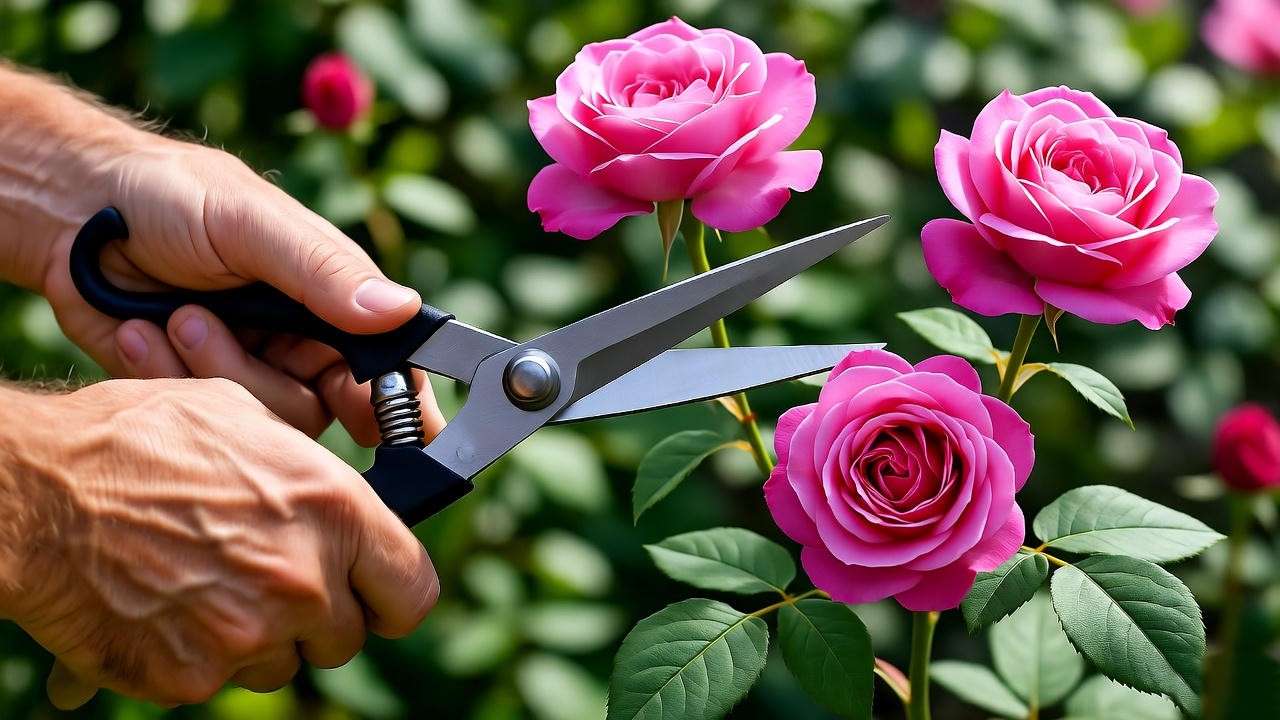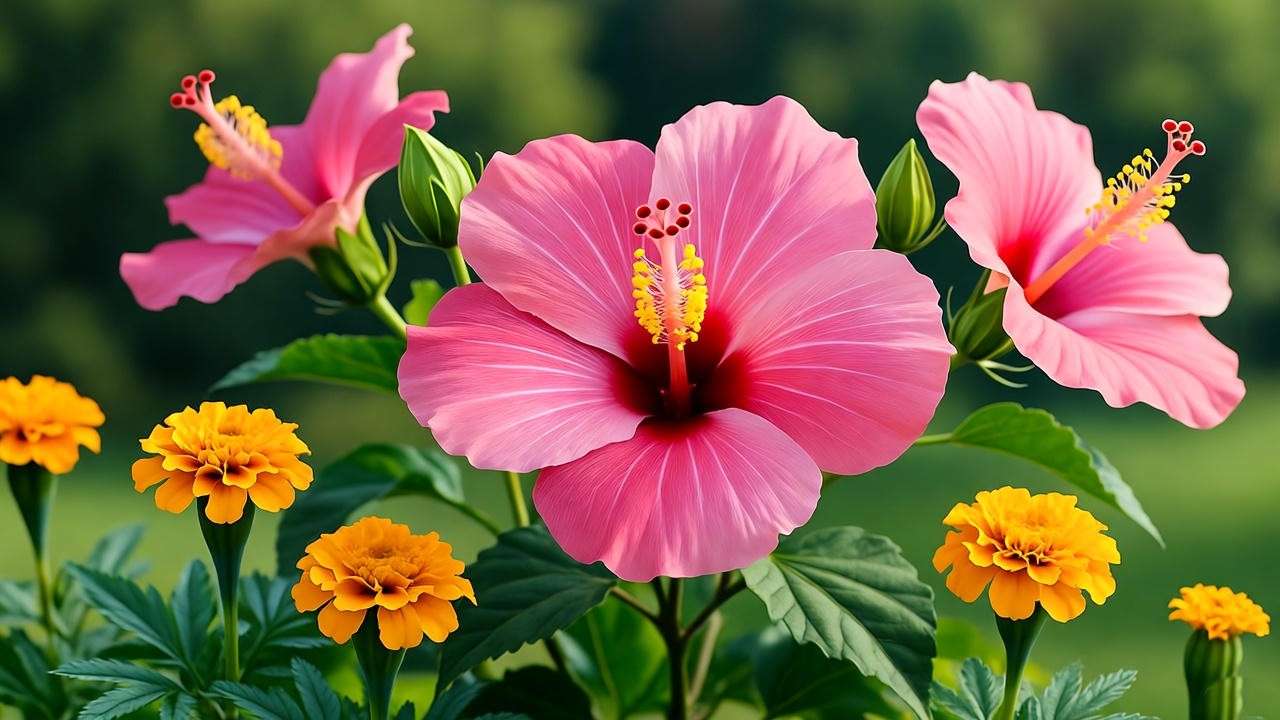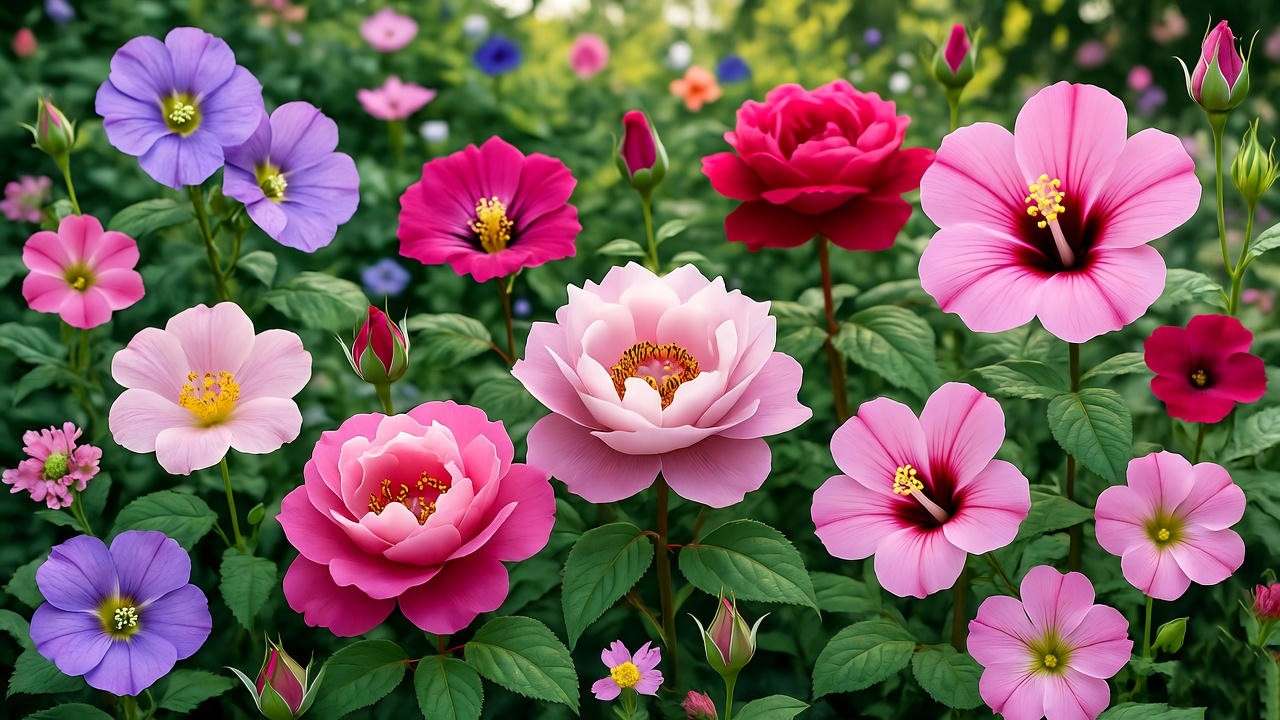Imagine stepping into your garden and being greeted by a burst of vibrant pink blooms, radiating joy and elegance. Pink flower plants, like roses, peonies, and hibiscus, are more than just eye candy—they’re a statement of beauty and serenity. Yet, growing a thriving pink flower plant can feel daunting without the right knowledge. Whether you’re a beginner or a seasoned gardener, this comprehensive guide unlocks seven expert-backed tips to ensure your pink flower plants flourish with stunning blooms. As a plant care specialist with over a decade of experience nurturing vibrant gardens, I’ve distilled the secrets to success in this skyscraper-level guide. Ready to transform your space with dazzling pink flowers? Let’s dive in! 🌺
Understanding Pink Flower Plants: Varieties and Their Unique Needs 🌺
Popular Pink Flower Plant Varieties
Pink flower plants come in a delightful array of varieties, each with its own charm and care requirements. Here are some of the most popular options to consider for your garden or home:
- Pink Roses: Known for their romantic allure, roses offer lush blooms in shades from soft blush to vibrant magenta. They thrive in full sun and well-draining soil.
- Peonies: These fluffy, full blooms are a garden favorite, blooming in late spring with a sweet fragrance. They prefer rich, loamy soil and partial shade in hotter climates.
- Hibiscus: Tropical and bold, hibiscus plants produce large, trumpet-shaped flowers and love warm, sunny spots with consistent moisture.
- Azaleas: These flowering shrubs dazzle with clusters of pink blooms and thrive in acidic soil with dappled shade.
- Petunias: Perfect for containers or borders, petunias offer vibrant pink flowers and tolerate a range of conditions, making them beginner-friendly.
- Camellias: Elegant and evergreen, camellias produce rose-like blooms in cooler seasons, ideal for shaded gardens.
| Variety | Light Needs | Water Needs | Soil Type |
| Pink Roses | Full sun (6+ hours) | Moderate, consistent | Well-draining, loamy |
| Peonies | Full sun/partial shade | Moderate, avoid soggy | Rich, loamy |
| Hibiscus | Full sun | Consistent, moist | Well-draining, fertile |
| Azaleas | Partial shade | Moderate, well-drained | Acidic, organic-rich |
| Petunias | Full sun | Moderate, drought-tolerant | Well-draining |
| Camellias | Partial shade | Moderate, consistent | Acidic, well-draining |
Why Pink Flower Plants Require Special Attention
Pink flower plants often face challenges like pest infestations, soil pH imbalances, or fading blooms if not cared for properly. For example, azaleas demand acidic soil to prevent yellowing leaves, while roses are prone to aphids without regular monitoring. Tailored care ensures vibrant colors and healthy growth. In my own garden, I once revived a struggling pink peony by adjusting soil pH and improving drainage—a game-changer that resulted in a spectacular bloom season. Understanding these nuances is key to unlocking their full potential.
Tip 1: Choose the Right Location for Your Pink Flower Plant 📍
Location is the foundation of a thriving pink flower plant. Most varieties, like roses and petunias, crave at least six hours of direct sunlight daily, while azaleas and camellias prefer partial shade to avoid leaf scorch. For indoor plants, place them near south-facing windows for ample light. To assess your space, try the sunlight tracker method: observe your garden or patio throughout the day, noting hours of direct sun versus shade. This ensures your pink flower plant gets the ideal light exposure for vibrant blooms. Pro tip: If you’re unsure about light levels, use a light meter app for precision.
Tip 2: Master the Art of Watering Pink Flower Plants 💧
Watering is a delicate balance for pink flower plants. Hibiscus and peonies need consistent moisture, while petunias can tolerate slight drought. Overwatering leads to root rot (signs include yellowing leaves or mushy stems), while underwatering causes wilting or drooping. Here’s a simple watering guide:
- Check soil moisture: Insert your finger 1–2 inches into the soil. If it feels dry, it’s time to water.
- Water deeply: Ensure water reaches the root zone, especially for garden plants.
- Use proper drainage: For potted plants, ensure pots have drainage holes to prevent waterlogging.
- Morning is best: Water early to reduce evaporation and fungal risks.
For precision, I recommend a moisture meter, especially for beginners. A general rule: water roses and hibiscus every 2–3 days in warm weather, adjusting for rainfall or humidity.

Tip 3: Optimize Soil Conditions for Vibrant Blooms 🌱
Soil is the backbone of healthy pink flower plants. Most prefer well-draining, nutrient-rich soil, but specific needs vary. Roses thrive in loamy soil with a pH of 6.0–6.5, while azaleas and camellias require acidic soil (pH 5.0–6.0). Test your soil’s pH with a home kit, available at garden centers, and adjust using sulfur (to lower pH) or lime (to raise it). Add organic matter like compost or peat moss to boost fertility. In my experience, amending soil with compost before planting a pink peony bed led to larger, more vibrant blooms within a season.

Tip 4: Feed Your Pink Flower Plant with the Right Nutrients 🌿
Nutrients fuel vibrant blooms. Pink flower plants need a balanced diet of nitrogen (for foliage), phosphorus (for blooms), and potassium (for root health). Use a fertilizer with a higher phosphorus content, like a 10-20-10 formula, during the blooming season. Here’s a seasonal feeding schedule:
- Spring: Apply a balanced fertilizer (e.g., 10-10-10) to kickstart growth.
- Summer: Switch to a bloom-boosting formula (e.g., 5-10-5) to support flowering.
- Fall: Reduce feeding to prepare plants for dormancy, except for evergreens like camellias.
Avoid over-fertilizing, which can cause leaf burn or excessive foliage with few blooms. Watch for signs of nutrient deficiency, like pale leaves (nitrogen lack) or poor flowering (phosphorus deficiency). A client once saw their hibiscus double its blooms after switching to a phosphorus-rich fertilizer—proof that feeding matters!
Tip 5: Prune and Deadhead for Continuous Blooms ✂️
Pruning and deadheading are essential for keeping your pink flower plants healthy and blooming profusely. Pruning shapes the plant, removes dead or diseased growth, and encourages new blooms, while deadheading—removing spent flowers—redirects energy to new flower production. For pink roses, prune in late winter or early spring, cutting back about one-third of the plant to an outward-facing bud at a 45-degree angle. Hibiscus benefits from light pruning throughout the growing season to maintain shape. For peonies, cut back dead foliage in fall to prevent disease.
Step-by-Step Pruning Guide for Pink Roses:
- Sterilize pruning shears with rubbing alcohol to prevent disease spread.
- Remove dead, damaged, or crossing branches to improve air circulation.
- Cut back to 4–6 healthy stems, leaving 5–7 buds per stem for robust growth.
- Seal large cuts with pruning sealant to protect against pests.
Deadheading is simpler: snip off faded blooms just above a healthy leaf node. For petunias, pinch off spent flowers weekly to encourage continuous blooming. In my garden, regular deadheading of petunias resulted in a vibrant pink display that lasted months longer than unmaintained plants. Visual aid: Imagine a rose stem—cut just above the first five-leaflet leaf to stimulate new buds.

Tip 6: Protect Your Pink Flower Plant from Pests and Diseases 🐞
Pink flower plants can attract pests like aphids, spider mites, and whiteflies, while diseases like powdery mildew or root rot can threaten their health. Proactive prevention and early intervention are key. Here are organic and chemical control methods:
- Aphids: Spray with a mixture of water and a few drops of dish soap, or introduce ladybugs, a natural predator. For severe infestations, use neem oil.
- Spider Mites: Increase humidity around plants like hibiscus, as mites thrive in dry conditions. Rinse leaves with water or apply insecticidal soap.
- Powdery Mildew: Common on roses, this fungal disease appears as white powder on leaves. Improve air circulation by spacing plants and apply a baking soda spray (1 tbsp per gallon of water).
- Root Rot: Prevent by ensuring well-draining soil and avoiding overwatering. If detected, remove affected roots and repot in fresh soil.
Preventative Tips:
- Space plants properly to allow air circulation.
- Inspect plants weekly for early signs of trouble (e.g., sticky residue from aphids).
- Plant companion species like marigolds or lavender to deter pests naturally.
In one case, I saved a client’s azalea bed from aphids by introducing companion marigolds, which repelled pests and added a complementary color pop. Regular monitoring is your best defense.

Tip 7: Seasonal Care for Year-Round Pink Flower Plant Success 📅
Seasonal care ensures your pink flower plants thrive year-round. Here’s a breakdown by season:
- Spring: Prepare beds with compost, fertilize with a balanced formula, and plant new pink flower plants like petunias or peonies. Check for winter damage and prune as needed.
- Summer: Water consistently, deadhead regularly, and monitor for pests. Mulch around plants to retain moisture and keep roots cool.
- Fall: Reduce watering and fertilizing for most plants, except evergreens like camellias. Cut back perennials like peonies to ground level after frost.
- Winter: Protect tender plants like hibiscus by moving potted plants indoors or covering garden plants with frost cloth. Mulch heavily to insulate roots.
For colder climates, overwintering tender plants like hibiscus indoors is crucial. Place them in a bright, cool spot (50–60°F) and water sparingly. Here’s a seasonal checklist for reference:
- Spring: Test soil pH, fertilize, prune roses and hibiscus.
- Summer: Water deeply, deadhead weekly, apply bloom-boosting fertilizer.
- Fall: Clean up fallen leaves, reduce feeding, prepare for dormancy.
- Winter: Mulch, protect from frost, monitor indoor plants.
This routine helped me maintain a vibrant pink rose garden through harsh winters, ensuring blooms returned stronger each spring.
Troubleshooting Common Pink Flower Plant Problems 🔍
Even with the best care, issues can arise. Here’s a troubleshooting guide for common pink flower plant problems:
| Problem | Possible Cause | Solution |
| No blooms | Insufficient light, nutrient deficiency | Move to sunnier spot, apply phosphorus-rich fertilizer |
| Yellowing leaves | Overwatering, poor drainage, low nitrogen | Check drainage, reduce watering, add nitrogen fertilizer |
| Drooping/wilting | Underwatering, heat stress | Water deeply, provide shade during heatwaves |
| White powder on leaves | Powdery mildew | Improve air circulation, apply fungicide or baking soda spray |
| Small, pale blooms | Nutrient deficiency, overcrowding | Fertilize, thin plants for better spacing |
Once, a reader contacted me about their non-blooming pink hibiscus. After confirming it was in partial shade, I advised relocating it to full sun and applying a bloom-boosting fertilizer. Within weeks, they reported vibrant blooms—a rewarding fix!
Enhancing Your Garden with Pink Flower Plants: Design Ideas 🌼
Pink flower plants can transform your garden or home into a visual masterpiece. Here are some design ideas:
- Borders: Line walkways with low-growing petunias or azaleas for a vibrant edge.
- Containers: Create stunning patio displays with potted hibiscus or roses, paired with trailing greenery like ivy.
- Mixed Beds: Combine pink peonies with lavender or white daisies for a harmonious color palette.
- Vertical Gardens: Use climbing pink roses on trellises to add height and drama.
For inspiration, picture a garden bed with pink peonies as the centerpiece, surrounded by purple lavender and white Shasta daisies—a reader favorite for its timeless elegance.
FAQs About Pink Flower Plant Care ❓
Q: Why aren’t my pink flowers blooming?
A: Lack of sunlight or nutrients is often the culprit. Ensure 6+ hours of sun and use a phosphorus-rich fertilizer.
Q: How often should I water my pink hibiscus?
A: Water every 2–3 days, keeping soil consistently moist but not soggy. Use a moisture meter for accuracy.
Q: Can pink flower plants grow indoors?
A: Yes, varieties like hibiscus and petunias thrive near bright windows. Ensure proper light and drainage.
Q: How do I prevent pests on my pink roses?
A: Inspect weekly, use neem oil for aphids, and plant marigolds nearby to deter pests naturally.
Q: When should I prune my pink peonies?
A: Cut back to ground level in fall after foliage dies back to prevent disease.
Conclusion: Grow Stunning Pink Flower Plants with Confidence 🌸
With these seven essential tips—choosing the right location, mastering watering, optimizing soil, feeding properly, pruning, protecting from pests, and seasonal care—you’re equipped to grow vibrant pink flower plants that steal the show. Whether it’s the romantic allure of roses or the tropical flair of hibiscus, your garden or home can bloom with color and life. Apply these expert-backed strategies, and share your success stories in the comments below! For more plant care insights, explore our guides on rose care or soil preparation. Join our gardening community to keep your green thumb thriving! 🌷














